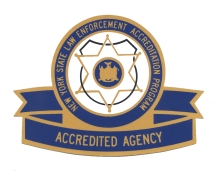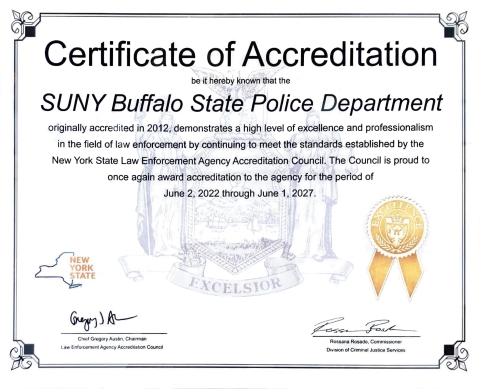Police Department Accreditation

Buffalo State’s University Police Department earned police department accreditation from the New York State Division of Criminal Justice Services Accreditation Council on June 14, 2012, June 8, 2017, and earned reaccreditation on June 2, 2022. This is a significant achievement as only 25 percent of all police departments in New York State are accredited.
Accreditation is a progressive and contemporary way for police agencies to evaluate and improve their overall performance. It provides formal recognition that an organization meets or exceeds general expectations of quality in the field. Accreditation acknowledges the implementation of policies that are conceptually sound and operationally effective.
The New York State Accreditation Program became operational in 1989 and has four principle goals:
- To increase the effectiveness and efficiency of law enforcement agencies utilizing existing personnel, equipment and facilities to the extent possible;
- To promote increased cooperation and coordination among law enforcement agencies and other agencies of the criminal justice services;
- To ensure the appropriate training of law enforcement personnel; and
- To promote public confidence.
The Accreditation Program is comprised of 111 standards and is divided into three categories. Standards in the Administrative section have provisions for such topics as agency organization, fiscal management, personnel practices, and records. Training standards encompass basic and in-service instruction, as well as training for supervisors and specialized or technical assignments. Operations standards deal with such critical and litigious topics as high-speed pursuits, roadblocks, patrol, and unusual occurrences.
The members of the University Police Department have a strong commitment to professionalism, and the desire to provide the best possible police services to the Buffalo State campus community. The accreditation lasts for five years. At that time, the University Police Department must undergo a re-accreditation assessment.


